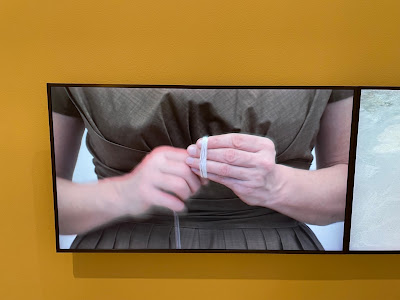A number of contingencies reminded me of several cases of intra-ethnic conflicts and tensions––historical and contemporary––in NYC's metropolitan region.
Readily available in the archive are the following:
a) the class-based conflict between Greek workers and their Greek bosses in the fur industry in the 1930s (Karvonides, Karpozilos)
b) the cultural clashes between post-1960s immigrants and established Greek Americans (involving vicious stereotyping) (Karpathakis)
and c) new immigrant exploitation at the time and domestic family abuses (Moskos and Moskos).
[The often cited conflict between Royalists and Venizelists in the 1910 and 1920s as well as strife over language issues must have also played out in this city too––after all The National Herald and the Atlantis were NYC products.]
In other domains, we know very little about the tensions surrounding the (ultimately resisted) initiative to create a museum of Greek immigration in the metropolis (see note below); as well as other contemporary class and cultural issues, one being the internal tensions surrounding the Greek Independence Day Parade. There must surely be others that our historians and sociologists are in a position to identify.
I bring this up because discussion of these issues (in conferences, panels, essays, documentaries) is necessary for Greek America's historical and social self-understanding. A scholar's task, as so many acknowledge, involves the speaking of certain truths, which no matter how uncomfortable to some or many, are necessary if one wishes to contribute to the making of informed diasporic citizens.
Note: Steve Frangos offers this information: "Yet not every one of these organizations [devoted to historical preservation] has met with unqualified success. Katherine R. Boulukos and Anastasia Nicholas, co-founders of The Greek Museum, the Center for Greek American Heritage (New York City) has experienced considerable hardship. Even getting the Greeks in the greater New York area to realize they have common goals in preserving their collective history sometimes seems impossible. 'I sent a letter, in Greek and English, to the 50 parishes in this area," said Ms. Boulukos. In essence the letter, addressed to the parish priests and the presidents of the communities, formally announced the museum was up and running, and that its representatives were available to visit their respective parishes to talk about the museum's work and its importance to the community. But the response was disappointing. "Do you know all we got was three responses?" said Boulukos.
This basic lack of vision is not restricted to parishes.'" (http://www.pahh.com/frangos/grassroots.html#top)
Sources:
Nkosi, Joanna Karvonides. Greek Immigrants in the Fur Manufacturing Industry in New York City, 1887 to 1943 Class and Ethnicity at the Workplace. 1991.
Kostis Karpozilos, 2013 [documentary]. Greek-American Radicals / Ταξισυνειδησία: Η Άγνωστη Ιστορία του Ελληνοαμερικανικού Ριζοσπαστισμού (see around 35' for the NYC fur industry case)
https://www.youtube.com/watch?v=FpUgWHlIqto
Karpathakis, Anna. “‘Whose Church is it Anyway?’ Greek Immigrants of Astoria, New York and their Church.” Journal of the Hellenic Diaspora 20:1 (1994): 97–122.
Peter C. Moskos and Charles C. Moskos. 2014. Greek Americans: Struggle and Success [Third edition]









